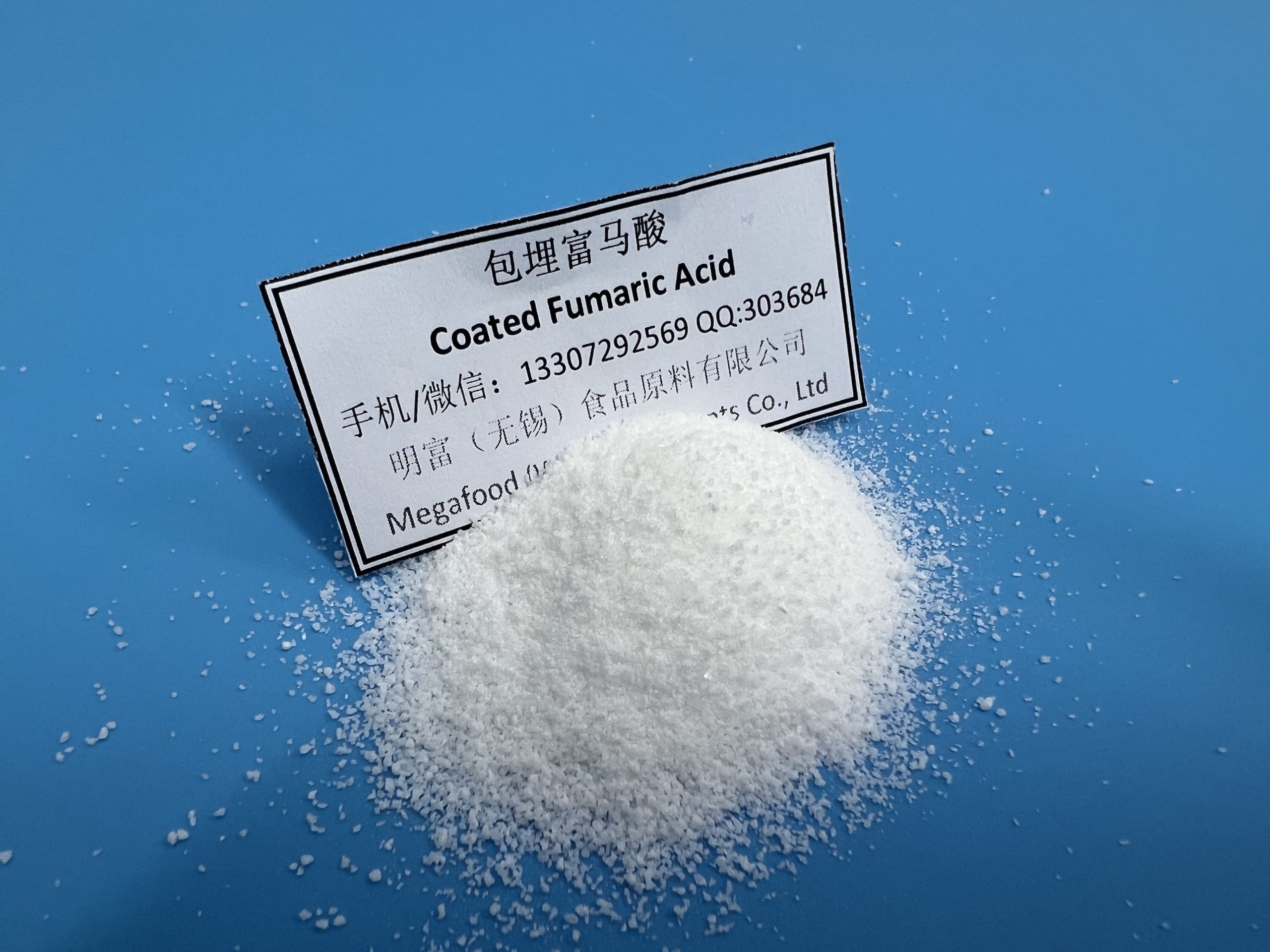Specfications of Encapsulated Fumaric Acid:
Assay of Fumaric Acid: 80-85%
Appearance: White free-flowing granules
Particle Size: 100% thru US 40 mesh
Percentage of Hydrogenated Vegetable Oil Coating: 15-20%
Lead: Not more than 2 mg/kg.
Maleic Acid: Not more than 0.1%.
Residue on Ignition: Not more than 0.1%.
Water: Not more than 0.5%.

Encapsulated Fumaric Acid is a white powder made by spraying hydrogenated vegetable oil over the acid. Fumaric acid is used in tortilla applications where a low pH is desired. Hydrogenated vegetable oil encapsulated fumaric acid is designed to give you greater control over the production process, quality and cost of bread and tortilla. It kick-start leavening during mixing, and regulate pH during baking. Encapsulation ensures that yeast development is not inhibited by the presence of active acid during the proofing process, which decreases the amount of yeast required. Controlled release of the fumaric acid during baking lowers the pH at just the right time to improve the performance of the preservative calcium propionate. Fumaric acid has E number E 297 used in beverages and baking powders.
Benefits
Low effective cost – Fumaric Acid is the strongest food acidulant
No moisture absorption – Fumaric Acid is non-hygroscopic
Laminated texture – Fumaric Acid acts as a leavening agent
Increases production – Fumaric Acid improves machinability in wheat flour tortillas, similar to sulfites
Extends shelf life – Fumaric Acid works synergistically with antimicrobials
Use rate
Typically used at between 0.1 to 0.2 lbs per 100 lbs flour (0.1 to 0.2 bakers percent).
Use enough to lower pH of the final tortilla to 5.8 – 6.2. Usage depends on external factors like alkalinity of water used, other ingredients used and type of flour.
Blend with flour and other dry ingredients at the beginning of the mixing process to achieve complete and uniform dispersion throughout the dough.

Leave a Reply